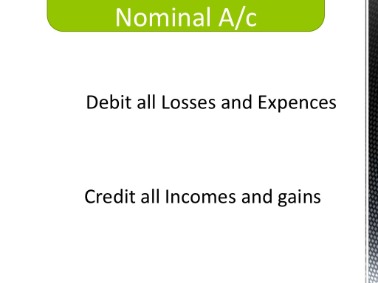
Automating your invoice process can help guarantee prompt and accurate invoicing. When a company owes debts to its suppliers or other parties, those are accounts payable. To illustrate, intuit quickbooks payments Company A cleans Company B’s carpets and sends a bill for the services.

The most prominent AR metrics are day sales outstanding (DSO), collection effectiveness index (CEI), accounts receivable turnover rate, and average days delinquent (ADD). They require significant manual effort that leads to errors like inaccurate data entry, delayed invoicing, miscommunications, late payments, and ineffective follow-up. Individual phone and email outreach or physically mailing paper checks and invoices can grind collection processes to a halt.
- When evaluating accounts receivable automation software, businesses should look for options that reduce the manual efforts involved in managing unpaid invoices, late payments, and bad debts.
- Closing Accounts Receivable translates to more payments being resolved; having Accounts Receivable remain open indicates ongoing disputes, unpaid invoices, or attempts to resolve bad debt.
- There are a variety of commonly accepted payments for small businesses, including e-transfer, ACH, credit, debit, check, and online payments.
- Once the business assesses the customer’s credit, they have the option to approve or deny their order.
- Open communication channels allow businesses to build positive customer relationships, making it easier and simpler to chase payments and settle disputes.
- It often includes invoicing, collections, payment processing, and cash application.
Receive payments 4x faster
Disputes can still delay payment and cause cash flow issues for your business. Once the business assesses the customer’s credit, they have the option to approve or deny their order. They can also choose to offer different payment options if credit is denied. For recurring customers, some businesses choose to waive this step if they have a trusted relationship with the customer.
Accounts Receivable Process: Step-By-Step Guide
During the month-end close process, your finance team will check that they’ve recorded all transactions and put the closing balance of all general ledger accounts into a report (a trial balance). This allows you to put together financial statements for that period to report to the rest of the company. Customers will often pay the portion of their invoice that’s not in dispute (a short payment), which what is the difference between operating adds another layer of complexity for your AR team. They’ll have to confirm why the short payment happened, whether it was for a valid reason, and how to apply the payment in your accounting system.
Automating aspects like invoice generation, payment processing, and late payment reminders makes it easy to maintain a prompt and consistent AR process. This improves the likelihood bookkeeping and tax planning strategies for plumbing companies of payment and enhances the customer experience. As your business grows, the volume of Accounts Receivable payments that you process will increase. Automating aspects of your accounts receivable—such as invoicing and late payment reminders—frees up time and energy to focus on other aspects of your business.
Why Is Accounts Receivable Management Important?
Accounts receivable management refers to the process of managing and tracking the payment due from customers for the goods and services purchased on credit. It includes tasks such as tracking invoices, collecting payments, examining and mitigating credit risks, and resolving disputes. Keeping your finances on track and staying on top of your accounts receivable (AR) is important for healthy cash flow in a small business. Effective accounts receivable management involves managing and tracking outstanding customer invoices and ensuring timely payment collection. Account receivables refer to the outstanding invoices or money which is yet to be paid by your customers. Until it is paid, such invoices or money is accounted as accounts receivables.
Step 5A: Writing Off Uncollectible Debts
Additionally, we will be sharing free accounts receivable templates with you to make implementation easier. Taulia Accounts Receivable Financing offers an efficient – and flexible – way to access cash and free up working capital without harming supplier relationships. With our innovative technology, businesses can connect with our platform, bypass the limits of traditional AR financing, and start accessing funding across the entire cash conversion cycle.
It helps you track, monitor, and on-time action on overdue/long-pending bills resulting in an increased inflow of cash that is essential for business growth. These AR management software tools go beyond automating manual tasks, to relieve significant pain around wasted time, underutilized talent, delayed payments, and customer miscommunications. Maintaining positive cash flow is always important, but even more in times of economic volatility, company growth, or unexpected events. Building an effective accounts receivable management is critical to maintaining a positive cash flow and fostering a successful customer relationship. It involves a range of tasks like onboarding new customers, evaluating their creditworthiness, issuing invoices on time, and timely collection of payments.
Automation allows for the instant generation and dispatch of invoices as soon as an order is confirmed via their preferred method—be it email, EDI, or even traditional mail. This not only speeds up the invoicing process but also sets the stage for quicker payments. Some payment service providers will wrap all of this up into one offering. Efficiently processing these payments is essential for accurate financial records.
Accounts receivable management refers to the process of handling and tracking the amount a customer owes to you for the goods purchased on credit. It includes functions such as monitoring invoices, collecting payments, evaluating and mitigating credit risks, and resolving customer disputes. Most businesses operate on credit, but when you sell goods on credit, there’s always a risk that some customers may miss the due date, fail to pay the invoice and affect your cash flow. Being proactive about collecting payments is a key part of accounts receivable management.
